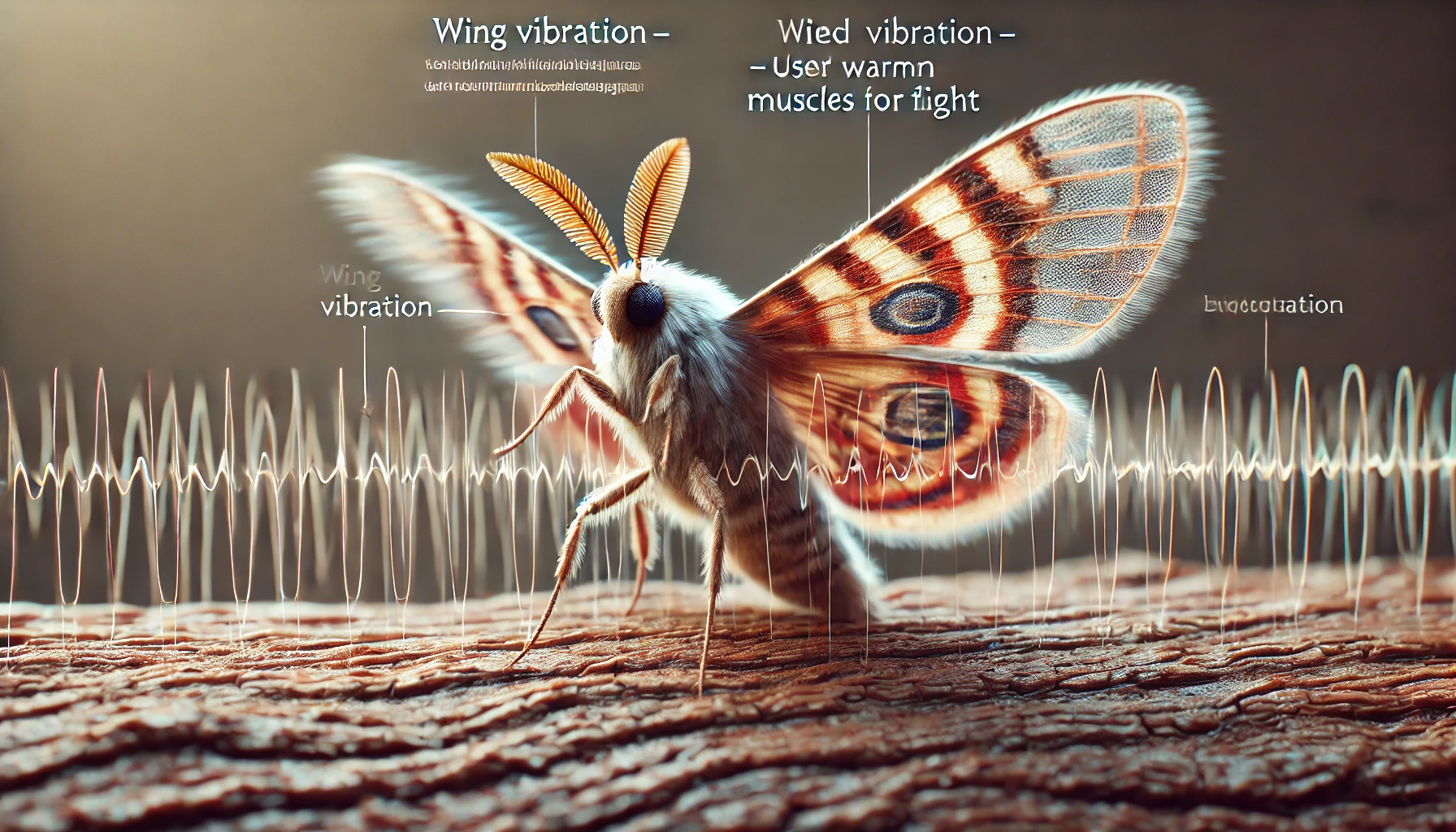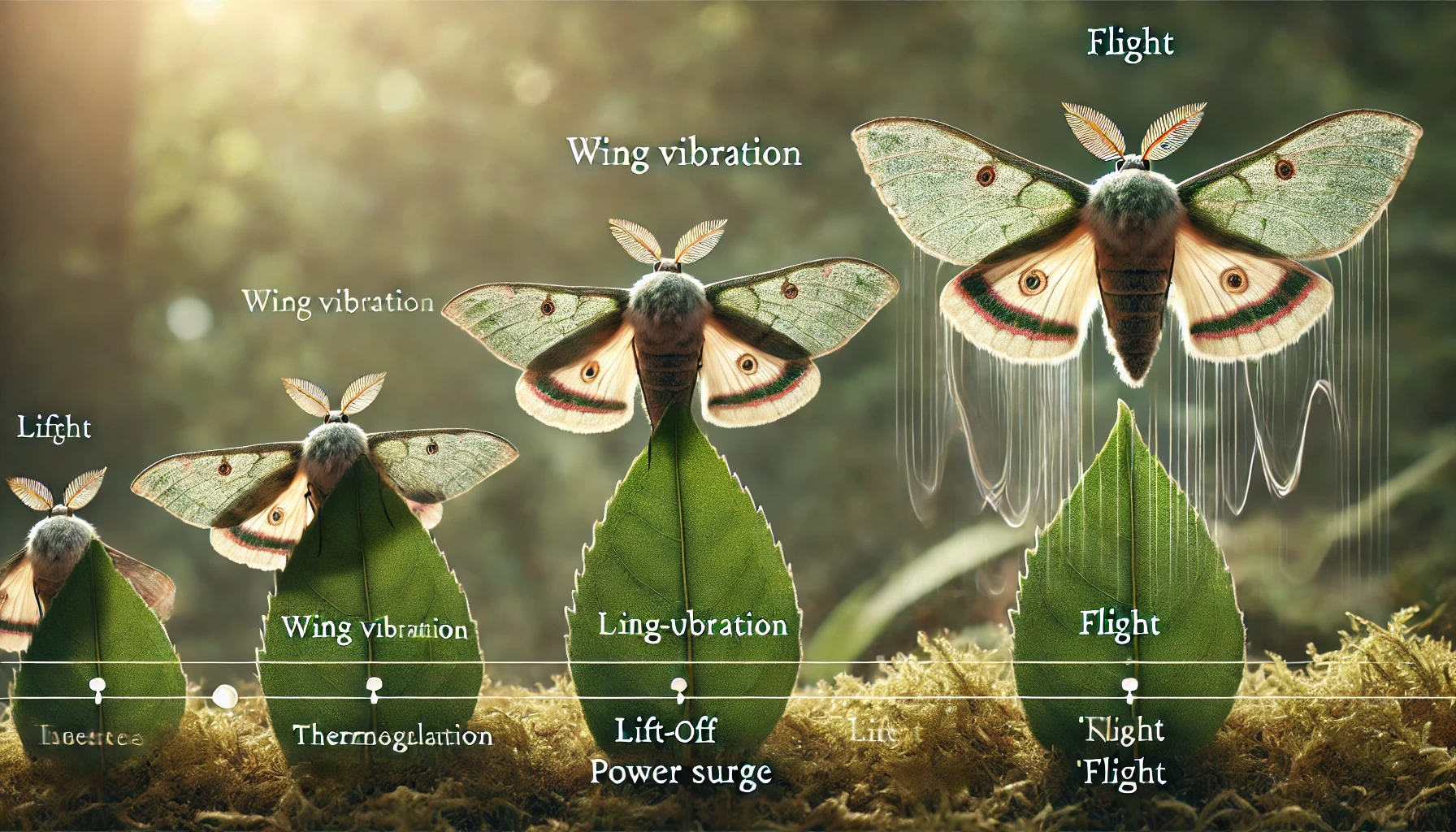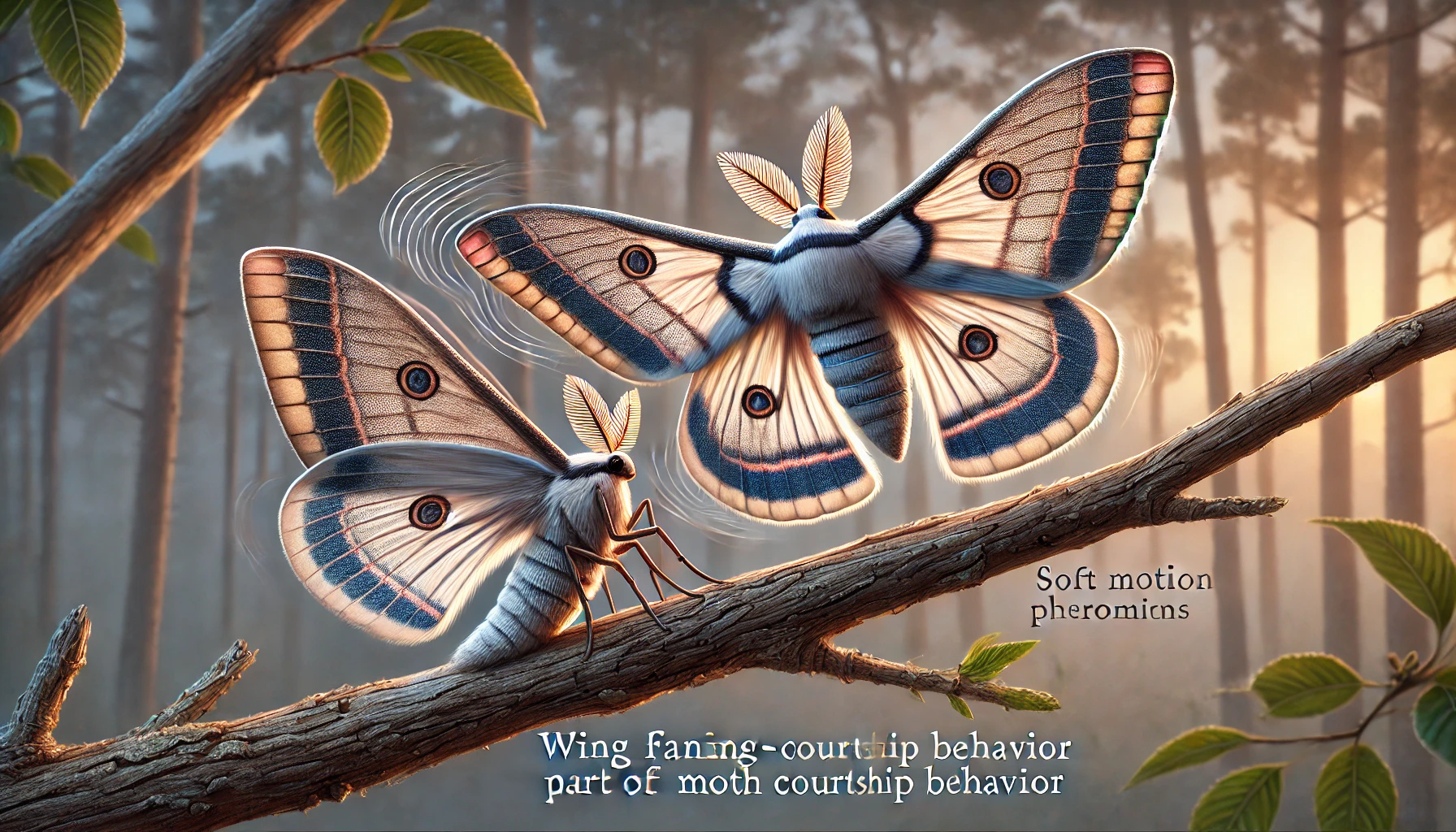Key Takeaways
-
Flight Warm-Up: Moths vibrate their wings to warm up flight muscles, which is crucial for nighttime movement without solar heat.
-
Defense Mechanism: Rapid wing movements can startle predators through visual patterns or ultrasonic sounds.
-
Communication Tool: Wing vibrations are used in mating rituals to signal potential mates during courtship.
-
Environmental Response: Quick wing movements help moths react swiftly to changes in their surroundings, enhancing agility.
-
Normal Behavior: Wing vibration is typically a sign of healthy behavior—not stress or injury.
-
Ecological Role: Moths contribute to ecosystems by pollinating plants and serving as prey for various wildlife.
 Have you ever seen a tiny moth on your porch or on a lamp, hoisting your wings and thought, “What’s going on? Is it afraid or hurt?” You are not alone. This bizarre behavior catches the owners of many homes from the guards. Do you know what? Moths are not going out of fear or disease – there are many attractive reasons behind this strange behavior. Let’s break it and make these rapid vibrations.
Have you ever seen a tiny moth on your porch or on a lamp, hoisting your wings and thought, “What’s going on? Is it afraid or hurt?” You are not alone. This bizarre behavior catches the owners of many homes from the guards. Do you know what? Moths are not going out of fear or disease – there are many attractive reasons behind this strange behavior. Let’s break it and make these rapid vibrations.
1. They’re Just Warming Up (Literally!)
Number one reason is that moths vibrate their wings, straight: They heat their flying muscles. Unlike butterflies, which soak the sunlight during the day to go, moths are nocturnal, which means that when they are not available during days, they move around during cooler nights. It is like starting its car on the morning of the cold. You can’t just kill gas; You have to allow the engine to heat up first. Moths generate heat internally by rapidly contracting their wing muscles—scientifically known as shivering thermogenesis (sounds fancy, right?). Imagine a chilly autumn night: moths will vibrate their wings vigorously, boosting their muscle temperature enough to take off comfortably. This warming ritual can last several minutes for larger moths like Luna or Polyphemus moths. It might look like they’re stuck in place, but they’re gearing up for flight. This isn’t just a neat trick; it’s essential for survival. Without this internal heating mechanism, moths couldn’t escape predators or find food efficiently. Especially in colder climates, this wing-shivering can mean the difference between life and death.

Not getting a solution?
Get your free pest control estimate today!2. Scaring Off Predators (It’s Not Just for Show!)
Here’s another remarkable fact: moths vibrate their wings to defend themselves against predators. It sounds a bit dramatic, but in nature, every second counts. Large moths like the Polyphemus have evolved striking eyespot patterns hidden beneath their wings. When disturbed, they suddenly snap these wings open, flashing their “eyes” and startling potential predators like birds or rodents. Some moths even go a step further, mimicking dangerous creatures like wasps or bees through rapid wing movement and vivid patterns. This clever survival strategy often convinces predators they’re facing something more harmful than a harmless moth. Even more fascinating, some moths rapidly create ultrasonic clicking sounds by fluttering their wings. These sounds interfere with predators that rely on echolocation, like bats, effectively scrambling their senses. Pretty clever, right?
3. A Little Romance (Moths Have Love Songs Too!)
Did you know moths also vibrate their wings to attract mates? Yep, these insects have their subtle love songs. Male moths, in particular, gently vibrate their wings to create faint sounds or vibrations as part of their courtship routine. Think of it as moths serenading each other on a quiet summer night. Female moths have their wing-vibrating trick—they release pheromones, chemical signals to attract potential mates, and the rapid fluttering helps disperse these scents farther into the environment. Essentially, they’re spreading their love messages into the air to reach partners from greater distances. Researchers even found that the strength and speed of these vibrations can indicate a moth’s health, affecting their appeal as mates. Who knew moth romance could be so complex? This intriguing dance of love isn’t just a spectacle—it’s vital for reproduction, ensuring moth populations thrive and continue their role in the ecosystem, like pollinating night-blooming plants.
4. Quick Reactions to Changes (They’re Always Ready!)
Sometimes, moth wing vibrations spontaneously respond to sudden environmental changes, such as exposure to unexpected cold or getting attracted towards bright lights. This behavior is more of a reflex, which helps the kites quickly adapt to their surroundings and be prepared for immediate flight if necessary. Ever turn your porch light and kites go into a pulsing mania? They are probably trying to orient themselves or adjust their body temperature quickly, responding comfortably to sudden changes. It is the way of nature to keep the kites alert, agile, and ready for anything that comes in their way.Clearing Up Some Misunderstandings
Let’s clarify something: seeing a moth rapidly vibrating its wings doesn’t mean it’s hurt or scared. It’s natural to feel concerned when witnessing such vigorous movements, but generally speaking, the moth is fine. It’s just doing its thing—warming up, communicating, or reacting to something unexpected. However, if a moth vibrates its wings excessively without taking flight, especially for a long time, it might indeed be exhausted or nearing the end of its natural life cycle. Usually, though, nothing is alarming about this behavior. Watching moth behavior can even be strangely comforting and educational. Rather than reacting negatively, appreciating these little insects’ incredible adaptability and resilience can change your perspective entirely. Honestly, they’re pretty remarkable creatures once you get to know their habits! Moths, despite their quiet presence, play an essential part in maintaining ecological balance. They act as pollinators and as a vital food source for numerous wildlife species like birds and bats. So, next time you observe a moth’s rapid wing vibrations, you’ll appreciate the hidden complexity and beauty behind what initially seems like an odd, simple behavior.You can try some natural remedies to keep these moths out of your home. If you feel things have gone out of control, it is advised to contact pest control professionals. Our team can provide a customized approach to protect your home effectively.
Visit our Species, Control, and Moth DIY Guide sections for additional resources on moths and ways to tackle a moths infestation.





